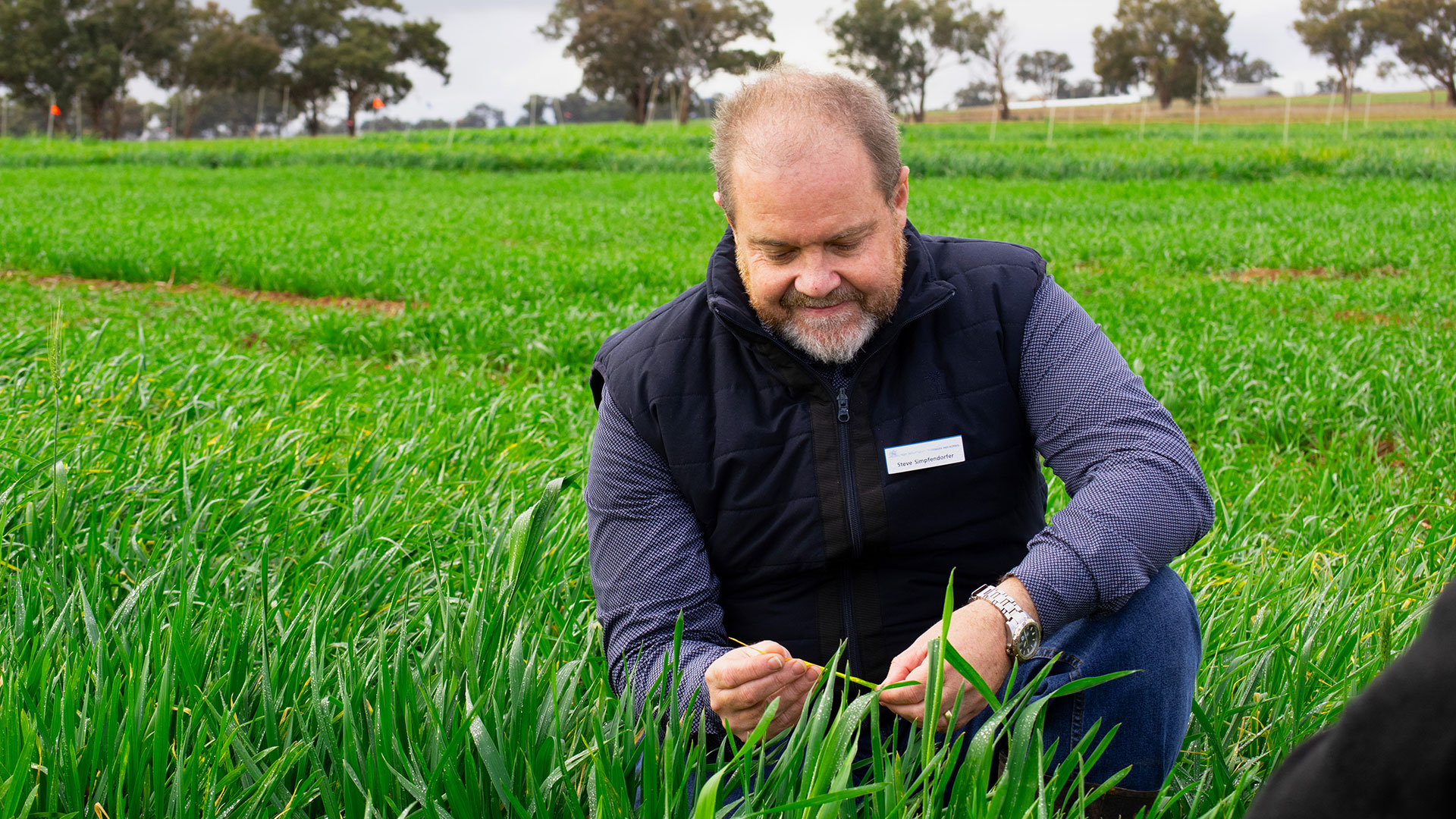Australia
February 2, 2023
Eastern Australian grain growers are well aware of the looming risk of stripe rust this season, with an inevitable green bridge and high occurrences from last year spurring the likelihood of significant early inoculum pressure.
Early management and getting on top of risk has been a strong industry message to growers and to help support this, the Grain Research and Development Corporation’s (GRDC) National Variety Trials (NVT) program has recently released their most up to date disease ratings, which growers can utilise to assess different varieties’ susceptibility and resistance to stripe rust along with other common wheat diseases.
These updated ratings and how growers can use them is the topic of GRDC’s most recent podcast – Stripe Rust Disease Ratings: What growers can do this season. You can listen to it via the GRDC website or your preferred popular podcast platform.

NSW DPI Senior Plant Pathologist Steven Simpfendorfer said growers can use GRDC’s updated NVT disease ratings to prepare for high stripe rust pressure this season by selecting resistant varieties or preparing to implement early management if growing susceptible varieties. Photo: Anvil Media.
NSW Department of Primary Industries (NSW DPI) Senior Plant Pathologist, Steven Simpfendorfer, who features in the podcast, said a main factor to early management was variety selection - either choosing to plant a more resistant variety to minimise disease risk altogether or being prepared to implement early management strategies if a susceptible variety is grown.
“Last year taught us a lot about risk verses reward when growing susceptible stripe rust varieties,” he said.
“If growers opt to plant susceptible varieties because they're chasing the reward of a perceived high yield, they’ll need to be right on top of management.
“Fungicides are effective if applications are well timed but last year, when we saw unavoidable 10-day delays in spraying because of weather conditions, growers faced significant yield loss of 30-40 per cent in susceptible varieties because of that heightened susceptibility to stripe rust infection.”
Dr Simpfendorfer said every little jump in resistance level makes a significant difference in the paddock - so growers will need to decide what they want to prioritise and make informed decisions based off reliable data like the NVT’s disease ratings.
“This could be things like making grazing decisions during the summer fallow period– if growers want to keep some green pick of wheat volunteers in their paddocks for sheep, then they should be wary about letting their susceptible varieties get away, because they’ll support a bigger green bridge risk than volunteers of more resistant varieties,” he said.
“If they’re choosing to grow a susceptible variety to stripe rust to chase yield, or because that’s what they have seed for, then they could be putting measures in place to ensure they can implement early management strategies, such as having adequate access to foliar fungicides and considering upfront fungicide options like Flutriafol.”
The NVT program provides growers with updated disease ratings annually based on pathotypes that were present during the previous season.
Dr Simpfendorfer said this was a credit to the NVT program and the work of the University of Sydney, all co-funded by GRDC, as growers have the information to understand how certain pathotypes can impact varieties and are able to make regionally relevant decisions to mitigate risk based off previous seasons.
“Different pathotypes can alter the resistance of a variety – therefore it’s critical growers are using the most up to date stripe rust ratings to make informed decisions about variety selection,” he said.
“The NVT program allows growers to understand what pathotypes could be present in their area based off historical data and look at whether varieties have resistant genes to these pathotypes.”
GRDC’s Manager of NVT Systems, Neale Sutton, said the NVT disease program provides annual ratings based on in-field assessments of disease from multiple trials across the country.
“When considering this year’s anticipated stripe rust risk, we want to encourage growers to use our nationally standardised system to understand how their chosen varieties could perform in their region against high disease pressure,” he said.
“GRDC has invested strongly in the NVT program, which supplies growers with independent data that can help them make decisions to strengthen their profitability and management options.”
Growers can access the latest Stripe Rust disease ratings via GRDC’s NVT website.